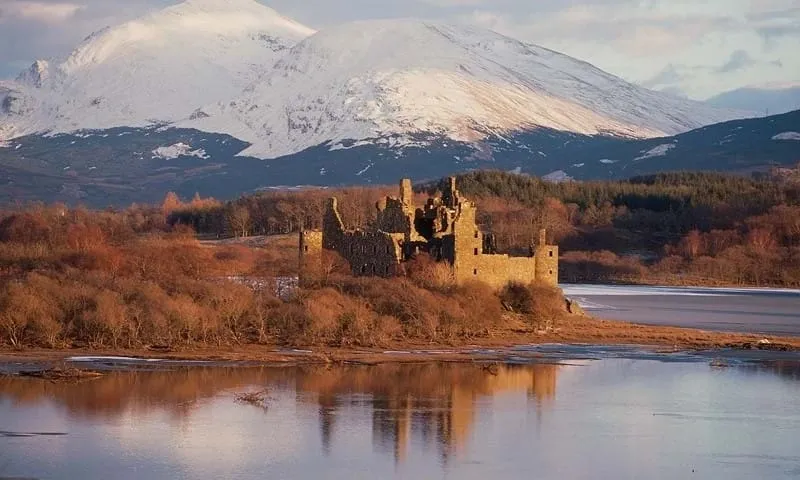Perched on a rugged peninsula at the northeastern edge of Loch Awe in Argyll and Bute, Scotland, Kilchurn Castle stands as a weathered relic steeped in history dating back to the mid-15th century. Originally serving as the stronghold for the influential Campbells of Glenorchy, the castle experienced expansions alongside the widening of their territorial influence over the following 150 years.

As the Campbells ascended to the title of Earls of Breadalbane and shifted their residence to Taymouth Castle, Kilchurn gradually slipped into disuse, eventually succumbing to ruin by 1770. Today, under the stewardship of Historic Environment Scotland, Kilchurn Castle opens its gates to visitors during the summer months, offering them the opportunity to delve into its fascinating past.

Kilchurn Castle, positioned at the northeastern edge of Loch Awe in Scotland, boasts a storied past. Constructed in the mid-15th century under the patronage of Sir Colin Campbell, it stood as the formidable stronghold for the influential Campbells of Glenorchy. Throughout its history, successive members of the Campbell family implemented various enhancements and modifications to the castle, leaving their mark on its enduring legacy.
_-_geograph.org.uk_-_967084.jpg/:/rs=w:1280)
Sir Duncan Campbell contributed a dining hall to Kilchurn Castle, enhancing its facilities, while the 6th Laird, Sir Colin Campbell, further improved accommodations during the 16th century. In the early 17th century, Sir Duncan Campbell, 1st Baronet, undertook the reconstruction of certain sections of the castle. Later, in 1693, Sir John Campbell, 5th Baronet, transformed Kilchurn into a barracks.

Kilchurn Castle played a significant role in several historical events. In 1714, it provided shelter for Jacobite rebels, and during the 1745 Jacobite rising, it functioned as a government garrison. Despite attempts by the Campbells to sell Kilchurn, their efforts proved fruitless. Ultimately, after sustaining damage from lightning in 1760, the castle was abandoned.


